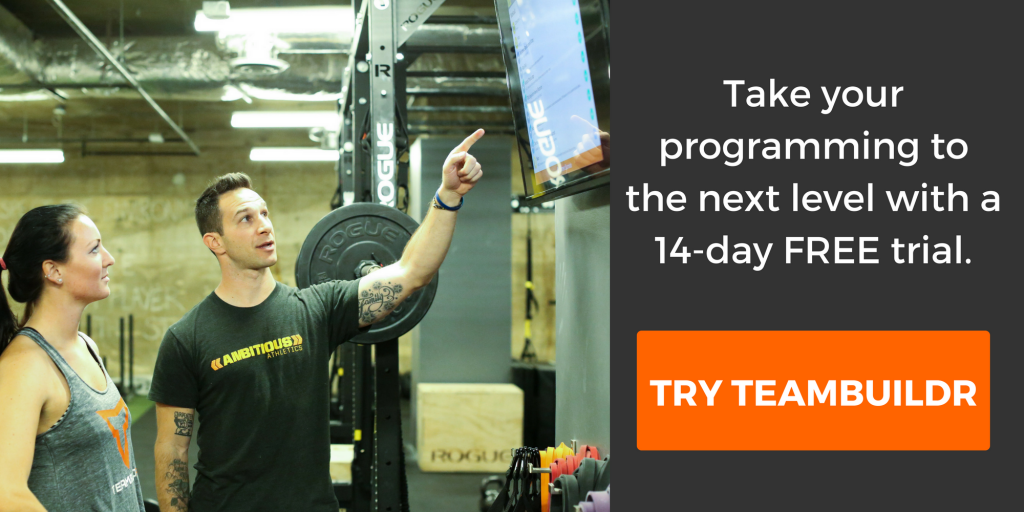Part 1: Assessing Your Needs and Wants to Develop a Strategic Plan
If you cruise Twitter and find the account @bestweightroom, you are going to see some rooms that absolutely make your mouth water. Rows upon rows of shiny new racks and logo branded plates and dumbbells on branded floors surrounded by turf and track surface running tracks with TRX’s and plyo boxes sprinkled in like a strength coach’s dream!
Please understand, I am a firm believer that it is not what your weight room looks like or even the fancy equipment you have, but the work that you put in while in that room that truly matters. I have seen some monsters be built with an old school Universal and 3 Walmart bench presses, but I also believe there is some truth to the voice speaking to Kevin Costner’s Ray Kinsella character in Field of Dreams, “If you build it, they will come.”
In advising you on how to strategically plan to improve or upgrade your facility, I offer several unique perspectives. My first weight room at Plainville (KS) High School was super small with two racks, a Universal and a menagerie of other donated equipment. At Mission Valley (KS) High School, my second stop, I had a huge Morton (metal) building that housed our weight room and surprisingly an indoor pole vault facility. At my third position at Council Grove (KS) High School, I had the opportunity to work in a brand new weight room, but not one that I designed so I had to deal with a room set up more like a fitness club than a scholastic weight room (or at least my vision of a scholastic weight room.)
Here at Wamego (KS) High School, we just passed a $20 million bond to improve our district facilities. Luckily our administration had the foresight to include a brand new multi purpose room in that bond which will house a new wrestling room and strength training facility. I am truly blessed to be in the middle of the process of building and outfitting my dream weight room. Albeit yesterday I learned that we have to cut off 700 feet to keep the building under the building size that requires a $30,000 sprinkler system.
So, I can give you the perspective of someone who has upgraded a small facility, a large tin shed, a poorly designed new facility, and the build and equipping of a brand new facility.
Purpose of the Room
The first thing you need to do when seeking to build a strategic plan and develop a vision for your facility is to decide on that facility’s purpose. Ask yourselves these questions:
- Who is going to want to use this facility?
- Who is allowed to use this facility (often not the same as those who want to use it)?
- Who is this facility going to benefit?
- Who is responsible for this facility in terms of supervision, design, and upkeep?
- Is this a room to be used as part of a physical education program and during the school hours?
- Is this a room to be primarily used for training by sports teams?
- Does this room have to be multi purpose (used in the daily educational environment and by athletic teams)?
- Will this room be utilized by faculty, staff, and community members for personal workouts?
Once you answer these questions, then hopefully you will have a better idea of who your room is for and who will be using it. My personal preference is that my facility is utilized only by the strength and conditioning staff with the teams they train and the classes they teach.
I may differ from you, but I don’t believe that a high school or college weight room should ever be used by the faculty, staff, or community members for personal workouts and it should never be designed to fit their needs. I have laid waste to more broken treadmills to allow the superintendent to “get in some cardio” than I care to count.
One word of caution, if you have to allow faculty, staff, administration, and community members into your facility in order to politically get what you need to train your athletes then be sure that you establish guidelines, expectations, and boundaries for those people just like you would your student or athletes. It will make your life a lot easier.
Needs Assessment
Secondly, you need to do a needs assessment. Basically, take a “lay of the land.” Evaluate what you have now, want to keep, need to jettison to a strength and conditioning museum, and what you need and want (determine the difference).
I love Lee Taft of Lee Taft Athletic Consulting’s recent quote on a Facebook about the size of your training area. Taft stated, “When you are training in a small space, by choice or necessity, you can do amazing training. Focus on what you can do, not what you cannot do.” Some of us will not have my luxury of building a new space and may be using a smaller facility. Take Taft’s advice to heart! Focus only on what you have the space to do when considering your needs.
The best way to complete this needs assessment is to evaluate the movements, exercises, and essential components of your training programs. Something like a monolift is fantastic pieces of equipment, but if you will never use it more than once or twice then you shouldn’t just have it to have it.
I would suggest checking out one of my previous TeamBuildr blogs: 10 Things High School Strength Coaches Need to Do Every Day. This article gives you my philosophy on how to choose the movements, exercises, etc. that you are using every day in your program if you need some guidance on where to get started on strategically planning for your weight room.
Most of us have a very good idea of what movements, lifts, and drills we want to do if we have the right space and equipment. So, ask yourself, “Does my room meet my needs?” Your answer to that question then drives your strategic plan. Follow this sequence to strategically plan for your weight room:
- Prioritize your movements.
- Prioritize your needs and wants.
- Focus on what you can do and not on what you cannot.
- Take care of immediate safety concerns.
- Be sure to document possible safety issues to present to your financial decision makers. Most of my new equipment has came in most part because I could show that what we were currently using wasn’t safe or sanitary.
- Know your budget.
- Explore all possible funding options.
- Develop a sequenced plan to upgrade your equipment based up your prioritized needs.
- I would develop a 5 year plan, but it could be as much as 10 years.
- Completely organize and develop a presentable version of your strategic plan to your administration.
- Have your wish list ready for those grant opportunities and budget spend downs that may spring up on you.
For most of us, safety concerns and budget are going to drive the bus, but I know firsthand that having a strategic plan in place and a sequence in which we need to purchase equipment for our room was extremely effective with my administration. Once I had it on paper and presented to them, most years I only had to walk into my superintendent’s office and say “We need X. It is in my strategic plan. Here is the completed purchase request.” My superintendent would look it over and check my strategic plan. The equipment was in our hands as soon as the company could deliver. Some of you will have a bigger fight in that regards than I have, but regardless the resistance, it is always best practice to be organized and prepared.
Having your wish list ready is also extremely critical. One of my former superintendents would have his building administrators save 50% of their budget for the last two months of school as a potential crisis reserve and would inevitably contact us on May 1 to say “We have some extra funds. Please send us a list of items you might need for your classroom.” Being able to answer that email or call with a defined list within minutes has helped me outfit my weight room more effectively multiple times.
Next time, I’ll be discussing “Part 2: Working with What You Got: Remodeling or Building Your Dream Room.” We’ll discuss building the foundation for your dream room including how to choose the right surface in your room to train on.
Subscribe to our blog
Subscribe to receive the latest blog posts to your inbox every week.
Related posts

Being a 1st Time High School Football Strength Coach - Part 2

Five Pieces of Advice for High School Strength Coaches from a College Strength Coach

